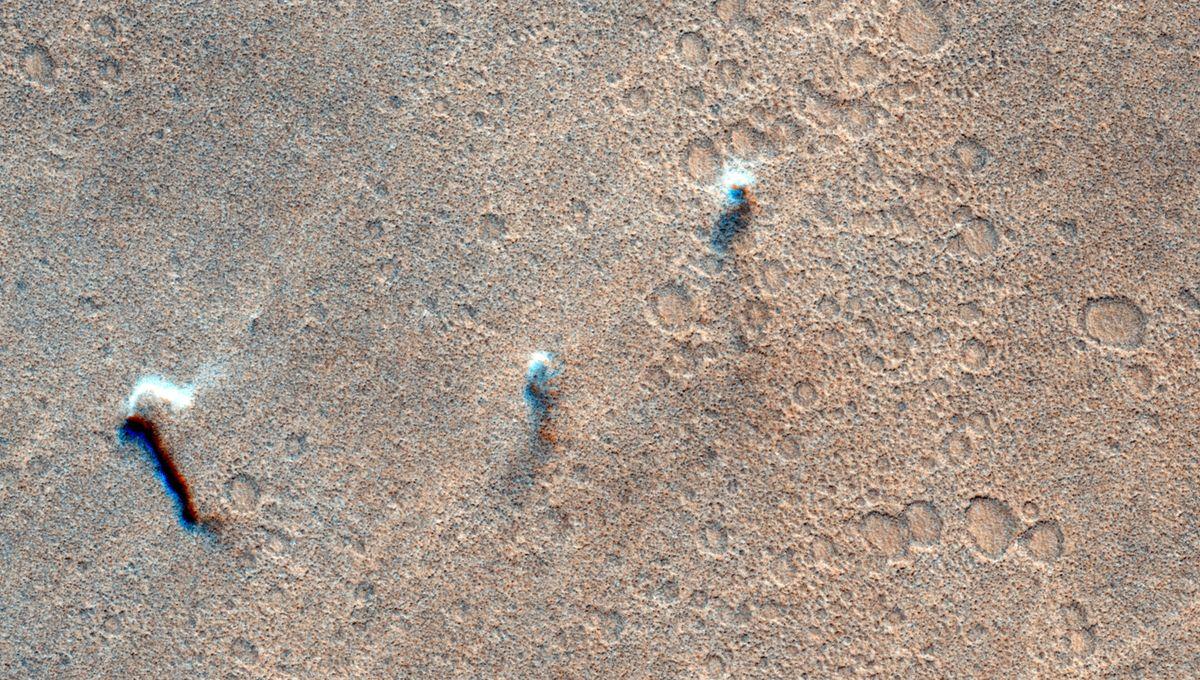-
أخر الأخبار
- استكشف
-
الصفحات
-
المدونات
-
المنتديات
Winds On Mars Are Faster Than Thought, Analysis Of 1,039 Dust Devils Shows

Winds On Mars Are Faster Than Thought, Analysis Of 1,039 Dust Devils Shows
The European Space Agency’s (ESA) Mars Express and ExoMars Trace Gas Orbiter are excellent spacecraft that have provided insights into the Red Planet time and time again. They are also capable of doing things beyond their standard job. They recently looked at interstellar comet 3I/ATLAS. They were also used to measure the winds on the surface of Mars, something that neither orbiter was designed to do.
The rest of this article is behind a paywall. Please sign in or subscribe to access the full content. The incredible results were possible thanks to an extensive catalog of dust devils, tornadoes of dust that have been seen by several rovers and orbiters in recent years. The combined data of the two ESA orbiters culminated in a large catalog of events, 1,039 in total, providing a new understanding of wind speed on Mars. The work showed that dust devils and winds can reach speeds of up to 160 kilometers (100 miles) per hour. They are much faster than previously assumed. You need to know about dust storms, and this is a rare view at what is causing dust lifting processes and wind at the surface. Colin Wilson “Dust devils make the normally invisible wind visible,” lead author Valentin Bickel from the University of Bern said in a statement. “By measuring their speed and direction of travel we have started mapping the wind all over Mars’s surface. This was impossible before because we didn’t have enough data to make this kind of measurement on a global scale.” So how did two orbiters not designed to measure wind speed create this detailed catalog of over 1,000 events? The secret was in how the images of the surface of Mars are taken by the spacecraft. “When our imagers acquire the pictures, the red channel and the blue channel are acquired at slightly different times, and by looking at the shift in the position of the dust level between the two images, we get a velocity,” Colin Wilson, ESA project scientist for both missions, told IFLScience. “So, that’s quite exciting!” Dust devil spotted on December 3, 2021. You can see the colors are off, like an old-fashioned 3D image. Image credit: ESA/TGO/CaSSIS This global understanding of wind and dust is very important. The only way to measure winds before this approach has been landing a weather station on Mars – and there have only been a handful, each in a specific location. This work created a global perspective. It is worth noting that despite the speedy wind, the atmosphere of Mars is so thin (1 percent of Earth's own) that we would not be blown away by such raging bluster. Still, the winds lift the dust, and those dust storms can block out the Sun, and they have been responsible for the demise of several Mars missions. “Dust is the most variable component of the atmosphere of Mars,” Wilson told IFLScience. “It's the one we worry about most if we have future exploration missions on the surface, whether it's a rover, relying on solar panels as the ExoMars rover will, or whether it's a human mission that will also need solar power for energy. You need to know about dust storms, and this is a rare view at what is causing dust lifting processes and wind at the surface.” The study is published in Science Advances.


